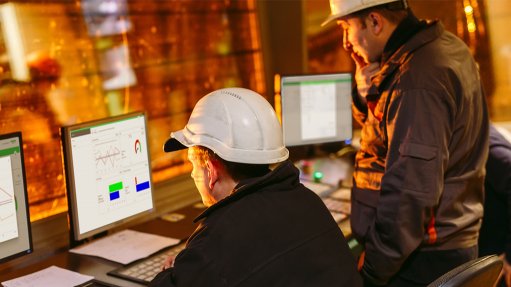
TELLING TELEMETRY The new EcoStruxure Geo Scada Expert system offered by Schneider Electric is perfect for mine water treatment and purification applications
Energy management and automation company Schneider Electric software leader Johan Potgieter says the company’s telemetry systems can be “highly effective” in mines’ water treatment and purification systems, owing to their meeting the rigours and demands of the mining sector.
Mines are constantly challenged by emerging regulations, rapid technology change and industrial shifts.
Subsequently, Schneider Electric offers its EcoStruxure Geo supervisory control and data acquisition (Scada) Expert system which can be configured into multitudes of storage backup options, including for water processing plants at mines with dual- and triple-disaster recovery sites, and remote performance servers for local access.
The EcoStruxure Geo Scada Expert system is a telemetry solution focusing on three key water subsegments: water resources, water networks and wastewater networks.
“In a time when the consistent provision of water – hampered by challenges such as ageing infrastructure – has become paramount, technology, and specifically telemetry, has stepped to the fore to offer workable solutions to utilities and water infrastructure operators,” he adds.
“The complete, integrated sensor-to-enterprise solution goes beyond addressing the most challenging remote monitoring and control applications, and helps utilities and operations manage and run secure and reliable water infrastructure.”
The system can address the most typical water challenges of mining operations, including acid mine drainage, heavy metals contamination and leaching, process chemicals pollution, as well as erosion and sedimentation. It can also be easily integrated into existing infrastructure, adds Potgieter.
“Data integration is often done at the database level, while the system’s real-time database, alarm/event journal and historian are all accessible using standard structured query language (SQL) technology.”
An external database, such as SQL server Oracle, can be used to periodically query the system’s server for any data needed.
The system can push data out to third-party databases based on operator commands or trigger events using a scheduling object.
Potgieter says there are numerous reasons for choosing telemetry for water and wastewater applications, but a pertinent one is increased data insight.
The distributed network protocol as part of a Scada system pack and smart remote terminal unit (RTU) allow for changes in the system to be detected, stored and time-stamped, while the RTU can even report critical data to the cloud-based Scada system, he adds.
“The system has a rich suite of industry-standard open interfaces and open platforms that can be used by any third-party reporting package or Microsoft Office.
“Data safety also increases; should communication at a remote site fail, operators can rest assured that their data is safe, time-stamped and stored locally in the RTU.”
Once the communication link is restored, the cloud-based Scada software will automatically load all the data generated during the outage using data backfilling.
Potgieter also notes that optimised telemetry systems enable clients to customise their equipment according to specific requirements and manage their field assets, including configurations, applications and firmware.
Other advantages of using telemetry include fewer site visits and a longer system life span, owing to the system’s conforming to global industrial telemetry standards such as IEC 60870- 5-101/-104.
The system also offers intelligent flexibility to adapt to the development and changes of clients, as the cloud-based Scada system can adapt and offer support to up to one-million end points.
Telemetry solutions form part of numerous solutions that create robust, fully configurable water solutions with standardised controls that allow for the optimisation of water networks, reduce training and increase visibility into water network performance, he concludes.